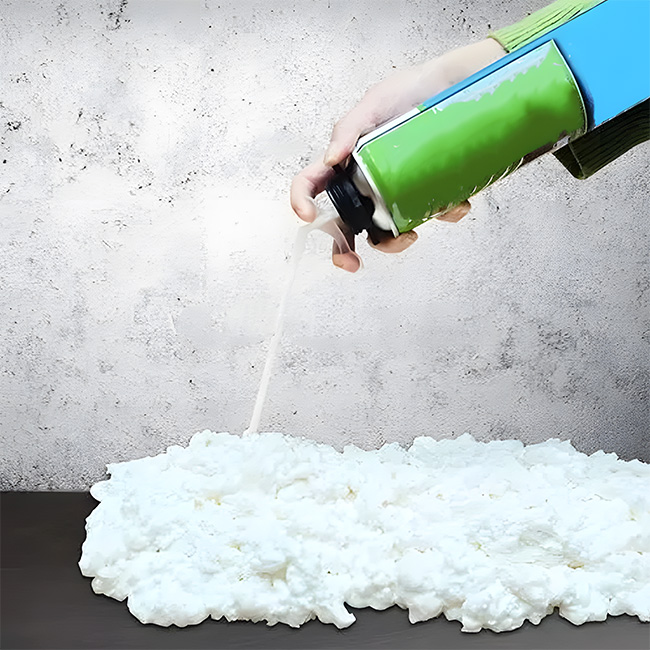Foaming agent

Introduction to Foaming Agents
A foaming agent is a chemical substance that lowers the surface tension of a liquid and promotes the dispersion of gas within a liquid or solid, creating foam. They are widely used in industries such as polymer production, plastics, construction materials, food, cosmetics, and more. The main function of a foaming agent is to introduce gas into a liquid system, forming foam with a stable structure through either vaporization or mechanical agitation.
The Role of Dimethyl Ether in Foaming Agents
Dimethyl Ether (DME) is an effective and clean foaming agent with several key roles:
Gas Generation: During the foaming process, DME vaporizes rapidly, generating large amounts of gas and forming a stable foam structure.
Improving Foam Performance: As a foaming agent, DME helps enhance the texture, uniformity, and stability of foam.
Replacement for Traditional Foaming Agents: Compared to chlorofluorocarbons (CFCs) and certain organic solvents, DME is more environmentally friendly, with minimal impact on the ozone layer, meeting green and eco-friendly demands.
Advantages of Dimethyl Ether as a Foaming Agent
Environmental Friendliness:
DME contains no chlorine or fluorine, making it a better alternative to traditional fluorine-based foaming agents, reducing its environmental impact.
It is non-toxic and harmless, meeting environmental protection and safety production standards.
Efficiency:
DME has a moderate vaporization temperature, allowing it to rapidly generate gas and mix well with the liquid system to create stable foam.
It performs stably at low temperatures, making it suitable for use in cold environments.
Cost-Effectiveness:
DME is relatively low in production cost and can be produced from a variety of raw materials, such as coal, natural gas, and biomass, offering high economic efficiency.
Using DME as a foaming agent improves production efficiency and reduces resource waste.
Safety:
Compared to traditional foaming agents like CFCs, DME is safer and presents fewer risks during storage and transportation.
It does not produce toxic gases or pose harm to human health during use.
Advantages of Dimethyl Ether in the Foaming Agent Industry
Driving Force of Environmental Policies:
As environmental regulations become stricter, traditional foaming agents (like CFCs) are being phased out. DME, as a green and non-toxic alternative, is gaining more market attention.
Wide Applications:
DME is not only used in the production of plastics and polyurethane foams but also has applications in construction, packaging, food industries, and more, providing significant market potential.
Technological Advancements:
With continuous improvements in production technology, the cost of DME is steadily decreasing, and its efficiency and stability during use are also improving.
Diverse Resource Base:
DME can be produced from various sources, including fossil fuels (coal, natural gas) and renewable resources (biomass), ensuring a sustainable supply.
Conclusion
Dimethyl Ether, as a foaming agent, offers a combination of environmental friendliness, efficiency, safety, and cost-effectiveness, making it highly advantageous in multiple industries. With the continued promotion of green policies and technological advancements, DME is poised to play an increasingly important role in the foaming agent industry.